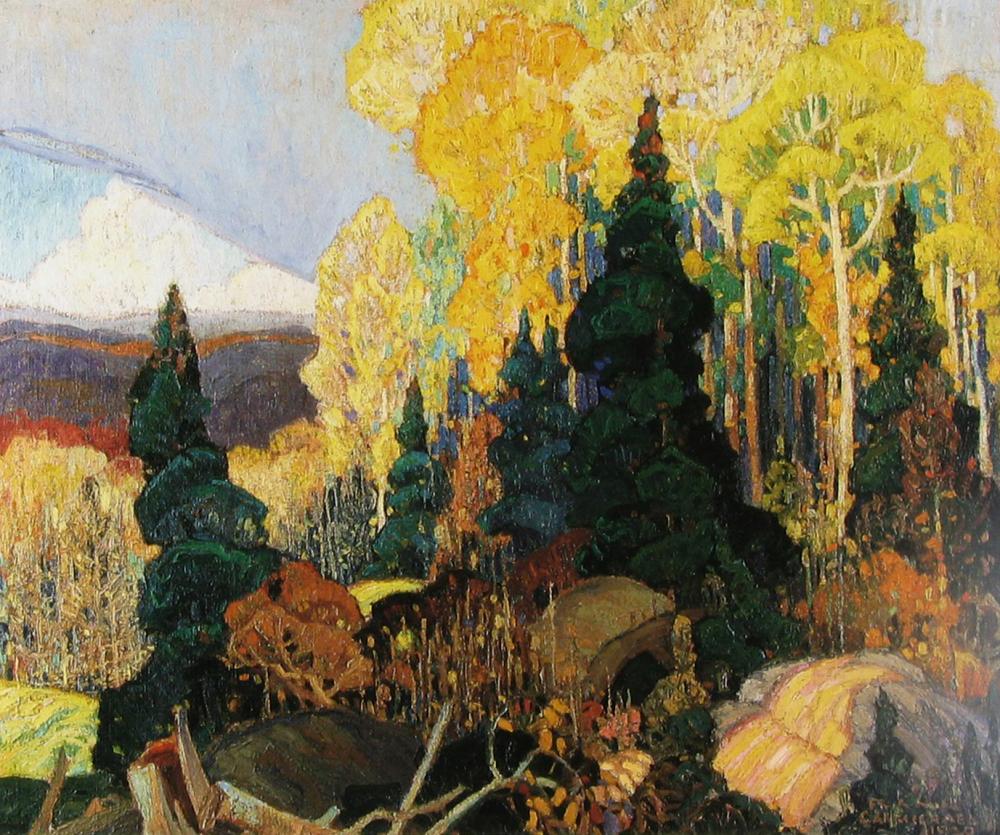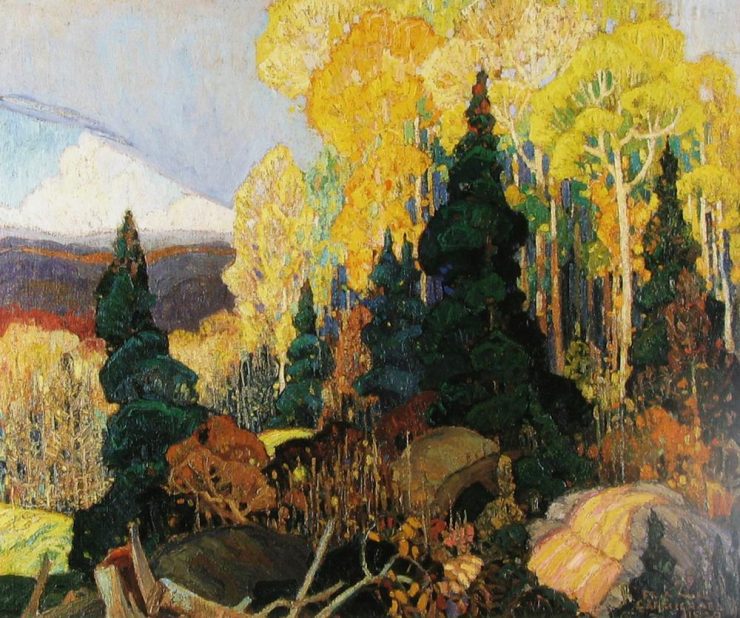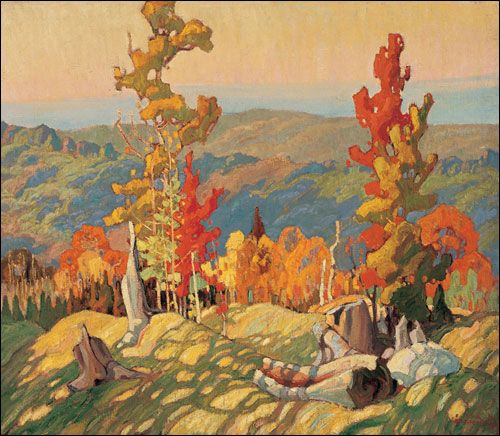
Autumn Hillside, oil on canvas
Franklin Carmichael (1890 – 1945) was a Canadian artist. He was the youngest original member of the Group of Seven, a group of painters I like very much. He studied at the Ontario College of Art in Toronto with William Cruickshank and George Reid. What I like about Carmichael’s work and some of the other Group of Seven painters is the far music in their paintings. They have a great sense of composition and color harmony.
The visual poetry in Frank Carmichael’s work is to a large extent due to the skill with which he accurately captures the itness of the landscape. Although abstracted to a degree, you can recognize in his paintings the characteristic forms of the Canadian landscape and the particular species of tree found in it. He is a good painter to study in this respect.
In this painting by Carmichael you can see how he has created a beautiful abstract design based on the landscape. Although based on the landscape, it is not an exact copy of it.
He has simplified the tree shapes, creating an interesting notan design using the conifer trees for the dark shapes. He has used the silhouette of the trees to create interesting negative shapes in the sky.
This raises an interesting question. How do you retain the visual poetry of the painting – the feeling of the real place – when you make such large changes to what you see?
The answer lies in retaining the itness of the objects you are painting. In this painting. Carmichael has very skillfully captured the itness of the trees, and of the hills and rocks in the landscape. When painting trees, there are certain characteristics you need to look for to capture their itness.
For example, you need to capture:
- the bulk of the tree
- the delicacy of the branches
- the tree silhouette
- the density of the foliage
- the branching structure
Here are some more of Frank Carmichael’s paintings:
Where to read more about Frank Carmichael, and see more of his works:
Learn more about critiquing artwork using my Visual Music & Poetry® model.

